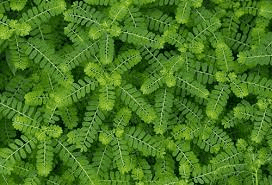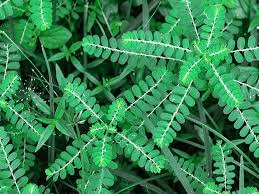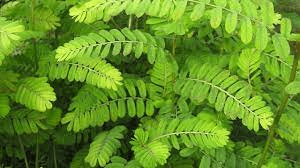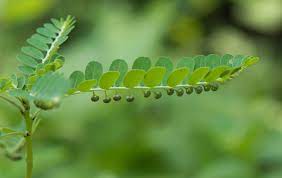Phyllanthus niruri, commonly known as Chanca Piedra, is a tropical plant belonging to the Phyllanthaceae family.
It is native to the rainforests of the Amazon, this herbaceous plant is known for its traditional use in herbal medicine, particularly in South America, India, and China. The name “Chanca Piedra” translates to “stone breaker” in Spanish, alluding to its historical use for treating kidney stones and gallstones.
The plant typically grows to a height of 30 to 40 centimetres and features small, greenish-yellow flowers. The entire plant, including leaves, stems, and roots, is utilized for its medicinal properties. Chanca Piedra contains various bioactive compounds, including alkaloids, flavonoids, lignans, and tannins, which contribute to its potential therapeutic effects.
In traditional medicine, Chanca Piedra has been employed to alleviate urinary and digestive issues, including the treatment of kidney stones, gallstones, and liver-related conditions. Some research suggests that the plant may help prevent the formation of kidney stones by interfering with the aggregation of crystals and promoting their elimination. Additionally, Chanca Piedra is investigated for its potential antiviral, anti-inflammatory, and antioxidant properties.
While it is widely used in traditional medicine, it’s essential to note that scientific research on the efficacy and safety of Chanca Piedra is ongoing, and consultation with a healthcare professional is recommended before using it for medicinal purposes.
The Botanical Description of Phyllanthus niruri
1. Plant Type: Phyllanthus niruri, commonly known as Chanca Piedra, is a small herbaceous plant belonging to the Phyllanthaceae family. It typically reaches a height of 30–40 cm and has a sprawling growth habit.
2. Leaves: The plant’s leaves are small, opposite, and elliptical, with a glossy texture. They have a pale green color, and the arrangement is densely packed along the stems.
3. Flowers: Phyllanthus niruri produces inconspicuous greenish-yellow flowers with a bell-shaped structure. The flowers are solitary or clustered in the leaf axils.
4. Fruits: The fruits of Phyllanthus niruri are tiny capsules that contain seeds. These capsules split open when mature, releasing the seeds.
5. Stem: The stems are slender, green, and often bear tiny, greenish-brown, or reddish-brown spots. The entire plant has a delicate appearance, with stems that may branch profusely.
6. Root System: The root system of Phyllanthus niruri is relatively shallow, spreading laterally. The plant often forms dense mats in rocky or sandy soils.
7. Preferred Habitat: Chanca Piedra thrives in tropical and subtropical regions, commonly found in areas with high rainfall and warm temperatures. It adapts well to diverse soil types.
8. Growth Cycle: Phyllanthus niruri is an annual herb, completing its life cycle within a year. It germinates, grows, flowers, produces seeds, and then dies back.
9. Traditional Uses: Beyond its botanical characteristics, Phyllanthus niruri has a rich history of traditional uses in various cultures, particularly in herbal medicine for kidney and liver support.
10. Adaptability: The plant is known for its adaptability to different environments, making it a resilient and widespread herb in various parts of the world.
The Geographic Distribution of Phyllanthus niruri

1. Native Regions: Phyllanthus niruri is native to tropical and subtropical regions of the Americas, including the Amazon rainforest, Central America, and the Caribbean.
2. Global Spread: Due to its medicinal properties and resilience, Chanca Piedra has spread to other continents. It is now found in Africa, Asia, and parts of North America.
3. Tropical Regions: The plant thrives in tropical climates, where it can be found in countries such as Brazil, Peru, India, and the Philippines.
4. Rainforest Habitats: Phyllanthus niruri is often associated with rainforest habitats, favoring areas with high humidity and consistent rainfall.
5. Invasive Characteristics: In some non-native regions, Chanca Piedra has exhibited invasive tendencies, spreading rapidly and outcompeting native vegetation.
6. Altitude Range: The plant can be found at various altitudes, from lowland areas to higher elevations, showcasing its adaptability to different terrains.
7. Human Introduction: Human activities, intentional or unintentional, have contributed to the global distribution of Phyllanthus niruri. It is often cultivated for its medicinal properties.
8. Riverbank Habitats: Chanca Piedra is frequently found along riverbanks and water bodies, taking advantage of the moist conditions provided by these environments.
9. Human Usage: The geographic distribution of Phyllanthus niruri is influenced by its use in traditional medicine and the growing interest in herbal remedies worldwide.
10. Conservation Considerations: Understanding the plant’s distribution is essential for conservation efforts, especially in regions where it may pose a threat to local ecosystems.
11. Soil Preferences: Phyllanthus niruri demonstrates adaptability to different soil types, including sandy, loamy, and rocky soils.
12. Biodiversity Impact: The spread of Chanca Piedra can impact local biodiversity, and monitoring its distribution helps assess its ecological impact in various regions.
The Chemical Composition of Phyllanthus niruri
1. Phytochemicals: Phyllanthus niruri is rich in phytochemicals, including flavonoids, alkaloids, lignans, tannins, and polyphenols. These compounds contribute to its medicinal properties.
2. Flavonoids: Flavonoids in Chanca Piedra exhibit antioxidant properties, protecting cells from oxidative stress and inflammation.
3. Alkaloids: The presence of alkaloids contributes to the plant’s potential analgesic and anti-inflammatory effects.
4. Lignans: Lignans in Phyllanthus niruri have shown hepatoprotective effects, supporting liver health.
5. Tannins: Tannins contribute to the astringent properties of the plant and may play a role in its traditional uses.
6. Polyphenols: Polyphenolic compounds contribute to the overall antioxidant capacity of Chanca Piedra.
7. Quercetin: Quercetin, a flavonoid found in Phyllanthus niruri, has anti-inflammatory and immune-modulating effects.
8. Corilagin: Corilagin, a tannin present in the plant, has demonstrated antiviral and anti-inflammatory activities.
9. Ellagic Acid: Ellagic acid, found in some varieties of Chanca Piedra, has antioxidant and anticancer properties.
10. Geraniin: Geraniin, a tannin compound, contributes to the plant’s anti-inflammatory and antioxidant effects.
11. Phyllanthin and Hypophyllanthin: These lignans are unique to Phyllanthus niruri and are associated with its hepatoprotective properties.
12. Beta-Carotene: The plant contains beta-carotene, a precursor to vitamin A, contributing to its nutritional content.
13. Essential Oils: Some varieties of Chanca Piedra may contain essential oils, adding to the plant’s aromatic properties.
14. Ursolic Acid: Ursolic acid, present in the plant, has anti-inflammatory and antimicrobial properties.
15. Gallic Acid: Gallic acid, a polyphenol, contributes to the plant’s antioxidant and anti-inflammatory effects.
Read Also: 15 Medicinal Health Benefits Of Dendrocnide sinuata (Stinging Tree)
The Medicinal Health Benefits Of Phyllanthus niruri (Chanca Piedra)

1. Kidney Stone Prevention: Chanca Piedra is renowned for its ability to prevent and treat kidney stones. It may inhibit the formation of stones and assist in their breakdown.
2. Liver Support: Phyllanthus niruri has hepatoprotective properties, supporting liver health and aiding in the treatment of liver conditions.
3. Antiviral Activity: Some compounds in Chanca Piedra exhibit antiviral effects, making it a potential remedy for certain viral infections.
4. Anti-Inflammatory Effects: The plant’s anti-inflammatory properties contribute to its effectiveness in addressing inflammatory conditions.
5. Antioxidant Action: Phyllanthus niruri’s antioxidant compounds help neutralize free radicals, protecting cells from oxidative damage.
6. Immune System Boost: Regular use of Chanca Piedra may enhance the immune system, improving the body’s ability to fight infections.
7. Analgesic Properties: The plant has analgesic effects, providing relief from pain and discomfort.
8. Diuretic Action: Chanca Piedra may act as a diuretic, promoting the elimination of excess fluids from the body.
9. Antispasmodic Effects: The plant’s antispasmodic properties can help alleviate muscle spasms and discomfort.
10. Gastrointestinal Health: Phyllanthus niruri supports digestive health, addressing issues such as indigestion and stomach discomfort.
11. Blood Sugar Regulation: Some studies suggest that Chanca Piedra may contribute to the regulation of blood sugar levels.
12. Respiratory Health: The plant has traditional uses in promoting respiratory health, making it beneficial for conditions like asthma and bronchitis.
13. Cardiovascular Support: Chanca Piedra may contribute to cardiovascular health by promoting optimal blood circulation and cholesterol levels.
14. Anticancer Potential: Preliminary research indicates potential anticancer properties, warranting further investigation.
15. Skin Conditions: The antioxidant and anti-inflammatory effects of Phyllanthus niruri may benefit certain skin conditions, including rashes and eczema.
16. Urinary Tract Infections: The plant is traditionally used to address urinary tract infections, exhibiting antibacterial properties.
17. Detoxification Support: Chanca Piedra supports the body’s natural detoxification processes, aiding in the elimination of toxins.
18. Weight Management: Regular use may contribute to weight management, possibly through its diuretic and digestive support effects.
The Methods of Usage to Achieve the Provided Health Benefits Of Phyllanthus niruri (Chanca Piedra)
1. Herbal Infusions: Prepare a herbal infusion by steeping dried Chanca Piedra leaves in hot water. This can be consumed as a tea to benefit from its medicinal properties.
2. Capsule Supplements: Chanca Piedra supplements, available in capsule form, offer a convenient way to incorporate the herb into daily routines. Follow recommended dosages.
3. Tinctures: Tinctures are liquid extracts of Chanca Piedra and can be added to beverages for easy consumption. Dosage should be in accordance with product guidelines.
4. Powdered Form: The herb is available in powdered form, allowing flexibility in usage. It can be added to smoothies, juices, or other recipes.
5. Traditional Decoction: In traditional medicine, a decoction can be made by boiling Chanca Piedra in water. This concentrated liquid can be consumed for enhanced potency.
6. Topical Applications: In some cases, Chanca Piedra extracts are used topically in creams or ointments for skin-related benefits.
7. Culinary Uses: In regions where it grows abundantly, Chanca Piedra leaves are sometimes used in culinary dishes, adding a slightly bitter flavor.
8. Herbal Combinations: Combining Chanca Piedra with other complementary herbs may enhance its overall efficacy for specific health goals.
9. Juicing: Extracting juice from fresh Chanca Piedra leaves and stems provides a concentrated form of its nutrients and can be included in a balanced diet.
10. Professional Guidance: For targeted health benefits or specific health conditions, seeking guidance from healthcare professionals or herbalists is advisable. They can provide personalized recommendations based on individual health needs.
11. Duration of Use: The duration of Chanca Piedra usage may vary based on health goals. Short-term use for acute conditions or long-term use for ongoing health support may be considered.
12. Combining with Lifestyle Changes: Incorporating Chanca Piedra into a holistic approach to wellness, including a balanced diet and regular exercise, can amplify its health benefits.
13. Monitoring Effects: Regular monitoring of how the body responds to Chanca Piedra is essential. This includes observing changes in symptoms, overall well-being, and any potential side effects.
14. Cycle Approach: Some individuals may adopt a cyclical approach to Chanca Piedra usage, allowing breaks between periods of consistent use. This approach aligns with traditional practices in certain cultures.
15. Culinary Integration: Explore creative ways to include Chanca Piedra in recipes, such as salads, smoothies, or as a garnish. This adds a nutritional boost to culinary experiences.
16. Customization of Dosage: The dosage of Chanca Piedra can be customized based on individual factors, health conditions, and responses. Adjustments may be necessary over time.
17. Complementary Therapies: Combining Chanca Piedra with other complementary therapies, such as acupuncture or yoga, can contribute to a well-rounded approach to health and wellness.
18. Periodic Consultations: Periodic consultations with healthcare providers or herbal practitioners allow for adjustments in usage based on changing health needs or conditions.
The Side Effects Of Using Phyllanthus niruri Medicinal Plant
1. Digestive Discomfort: In some cases, Chanca Piedra may cause mild digestive discomfort, including nausea or upset stomach. Adjusting the dosage or discontinuing use may alleviate these effects.
2. Allergic Reactions: Individuals with known allergies to Phyllanthus niruri or related plants should exercise caution. Allergic reactions may include itching, rash, or swelling. Discontinue use and seek medical attention if symptoms occur.
3. Interactions with Medications: Chanca Piedra may interact with certain medications. Individuals taking prescription drugs should consult with healthcare professionals before using the herb.
4. Pregnancy and Breastfeeding: Pregnant or breastfeeding individuals should seek guidance from healthcare providers before using Chanca Piedra, as its safety during these periods is not well-established.
5. Blood Sugar Levels: Chanca Piedra may influence blood sugar levels. Individuals with diabetes or those on medications for blood sugar regulation should monitor levels regularly.
6. Potential Diuretic Effects: The diuretic properties of Chanca Piedra may increase urine production. Individuals with kidney issues or those taking diuretic medications should use it cautiously.
7. Impact on Blood Pressure: Some individuals may experience changes in blood pressure. Those with hypertension or hypotension should monitor their blood pressure while using Chanca Piedra.
8. Central Nervous System Effects: Excessive use may lead to central nervous system effects, including dizziness or confusion. Moderation is key to avoiding these side effects.
9. Liver Function: While Chanca Piedra is often used for liver support, excessive consumption may have adverse effects on liver function in some individuals. Regular monitoring is advisable.
10. Skin Sensitivity: Topical use of Chanca Piedra extracts may cause skin sensitivity or irritation in some individuals. Conducting a patch test before widespread use is recommended.
11. Respiratory Issues: Individuals with respiratory conditions should use Chanca Piedra cautiously, as it may exacerbate certain respiratory issues in some cases.
12. Hormonal Imbalance: Excessive consumption may lead to hormonal imbalances. Individuals with pre-existing hormonal conditions should consult healthcare professionals.
13. Mental Health Effects: Some individuals may experience mental health effects. Those with pre-existing mental health conditions should consult a healthcare professional before use.
14. Photosensitivity: Chanca Piedra may increase photosensitivity, making the skin more susceptible to sunburn. Sun protection measures are advisable during use.
Read Also: 17 Medicinal Health Benefits Of Iris leptophylla (Slender-Leaf Iris)
The Scientific Research and Studies of Phyllanthus niruri

1. Antilithiatic Properties: Scientific studies have explored the antilithiatic (kidney stone prevention) properties of Chanca Piedra, indicating its potential in inhibiting stone formation and aiding in stone breakdown.
2. Hepatoprotective Effects: Research suggests that Phyllanthus niruri exhibits hepatoprotective effects, supporting liver health and potentially assisting in the treatment of liver conditions.
3. Antiviral Activity: Scientific investigations have explored the antiviral activity of Chanca Piedra, demonstrating its potential in addressing certain viral infections.
4. Anti-Inflammatory Actions: Studies indicate that Chanca Piedra possesses anti-inflammatory properties, supporting its traditional uses in managing inflammatory conditions.
5. Antioxidant Capacity: Research has shown that Phyllanthus niruri has a significant antioxidant capacity, contributing to its cellular protection against oxidative stress.
6. Immune-Modulating Effects: Some studies suggest that Chanca Piedra may modulate the immune system, enhancing the body’s defense mechanisms.
7. Analgesic Properties: Scientific research has explored the analgesic (pain-relieving) properties of Chanca Piedra, indicating its potential in providing relief from discomfort.
8. Anticancer Potential: Preliminary studies have investigated the potential anticancer properties of Chanca Piedra, paving the way for further research into its role in cancer prevention and treatment.
The Safety Precautions and Recommendations In Using Phyllanthus niruri Medicinal Plant
1. Consultation with Healthcare Professionals: Before incorporating Chanca Piedra into your health regimen, especially for medicinal purposes, consult with a healthcare professional. This is crucial, particularly if you are pregnant, breastfeeding, or taking medications.
2. Allergy Testing: Perform an allergy test before regular use to identify any adverse reactions. If itching, swelling, or difficulty breathing occurs, discontinue use and seek medical attention.
3. Dosage Moderation: Avoid excessive consumption of Chanca Piedra. Stick to recommended dosages, as excessive intake may lead to side effects, including digestive discomfort and central nervous system effects.
4. Sun Protection: Due to potential photosensitivity, users should use sun protection measures such as sunscreen when exposed to sunlight during and after using Chanca Piedra.
5. Monitoring Blood Sugar: Individuals with diabetes or those on medications for blood sugar regulation should monitor their blood sugar levels regularly while using Chanca Piedra.
6. Liver Function Monitoring: If you have pre-existing liver conditions, monitor liver function regularly while using Chanca Piedra, as some individuals may experience liver-related side effects.
7. Kidney Function Monitoring: Individuals with kidney issues should undergo regular check-ups, as Chanca Piedra may impact kidney function in some cases.
8. Mental Health Monitoring: If you have pre-existing mental health conditions, monitor for any changes in mental well-being while using Chanca Piedra. Seek professional advice if needed.
9. Respiratory Condition Caution: Individuals with respiratory conditions should use Chanca Piedra cautiously, as it may exacerbate certain respiratory issues in some cases.
10. Hormonal Imbalance Awareness: If you have pre-existing hormonal conditions, be aware of any potential hormonal imbalances while using Chanca Piedra. Consult with healthcare professionals if necessary.
11. Blood Pressure Observation: Individuals with hypertension or hypotension should monitor their blood pressure regularly while using Chanca Piedra, as it may influence blood pressure.
12. Pregnancy and Breastfeeding Caution: Pregnant and breastfeeding individuals should exercise caution and seek professional advice before using Chanca Piedra due to limited information on its effects during these periods.
13. Interaction with Medications: If you are taking prescription medications, consult with healthcare professionals to ensure that Chanca Piedra does not interact adversely with your medications.
14. Periodic Health Check-ups: Regular health check-ups can help track any changes or developments related to Chanca Piedra usage. Keep healthcare providers informed about herbal supplements you are taking.
15. Discontinuation in Case of Side Effects: If you experience any unexpected side effects while using Chanca Piedra, discontinue use and seek medical advice promptly.
16. Inclusion in a Holistic Approach: Integrate the use of Chanca Piedra into a holistic approach to health, including a balanced diet, regular exercise, and other wellness practices for comprehensive well-being.
FAQs About Phyllanthus niruri Medicinal Plant
1. Is Chanca Piedra safe for long-term use?
Chanca Piedra is generally considered safe for long-term use when used within recommended dosage guidelines. However, individual responses may vary, and periodic health check-ups are advisable.
2. Can Chanca Piedra be used during pregnancy?
Pregnant individuals should exercise caution and consult with healthcare professionals before using Chanca Piedra due to limited information on its effects during pregnancy.
3. Does Chanca Piedra interact with medications?
Chanca Piedra may interact with certain medications. It is advisable to consult with healthcare professionals, especially if you are taking prescription drugs.
4. What is the recommended dosage for Chanca Piedra supplements?
The recommended dosage may vary based on individual health conditions and formulations. Follow product guidelines or consult with healthcare professionals for appropriate dosages.
5. Can Chanca Piedra be used for children?
It is recommended to consult with pediatric healthcare professionals before giving Chanca Piedra to children to ensure safety and appropriate dosage.
6. Can Chanca Piedra be used for skin issues?
Answer: Yes, Chanca Piedra’s medicinal properties extend to skincare, and it may be beneficial for conditions like eczema and psoriasis when applied topically.
7. Does Chanca Piedra have any known contraindications?
Individuals with known allergies to Chanca Piedra or its components should avoid its use. Additionally, those with specific health conditions should consult healthcare professionals for guidance.
8. How long does it take to experience the health benefits of Chanca Piedra?
The time to experience benefits may vary. Consistent and moderate use, as well as individual factors, can influence the timeline for observing positive effects.
9. Can Chanca Piedra be consumed in the form of tea?
Yes, Chanca Piedra can be consumed as a tea. The leaves or extracts can be used to prepare herbal infusions with potential health benefits.
10. Are there specific age restrictions for using Chanca Piedra?
While there are no strict age restrictions, it is advisable to consult with healthcare professionals, especially for children, pregnant women, and the elderly, to ensure safe and appropriate usage.
11. Can Chanca Piedra be used in conjunction with other herbal supplements?
Combining herbal supplements, including Chanca Piedra, should be done with caution. Consult with healthcare professionals to prevent potential interactions.
12. What is the recommended dosage for Chanca Piedra supplements?
The recommended dosage may vary based on individual health conditions and formulations. Consult with healthcare professionals or follow product guidelines for appropriate dosages.
13. Are there specific benefits of using Chanca Piedra for mental health?
While limited research suggests potential cognitive benefits, individuals with mental health concerns should consult with healthcare professionals for personalized advice.
14. Can Chanca Piedra be grown at home for personal use?
Yes, Chanca Piedra can be cultivated at home in suitable climates. However, proper care and consideration for its growth habits are essential for successful cultivation.

